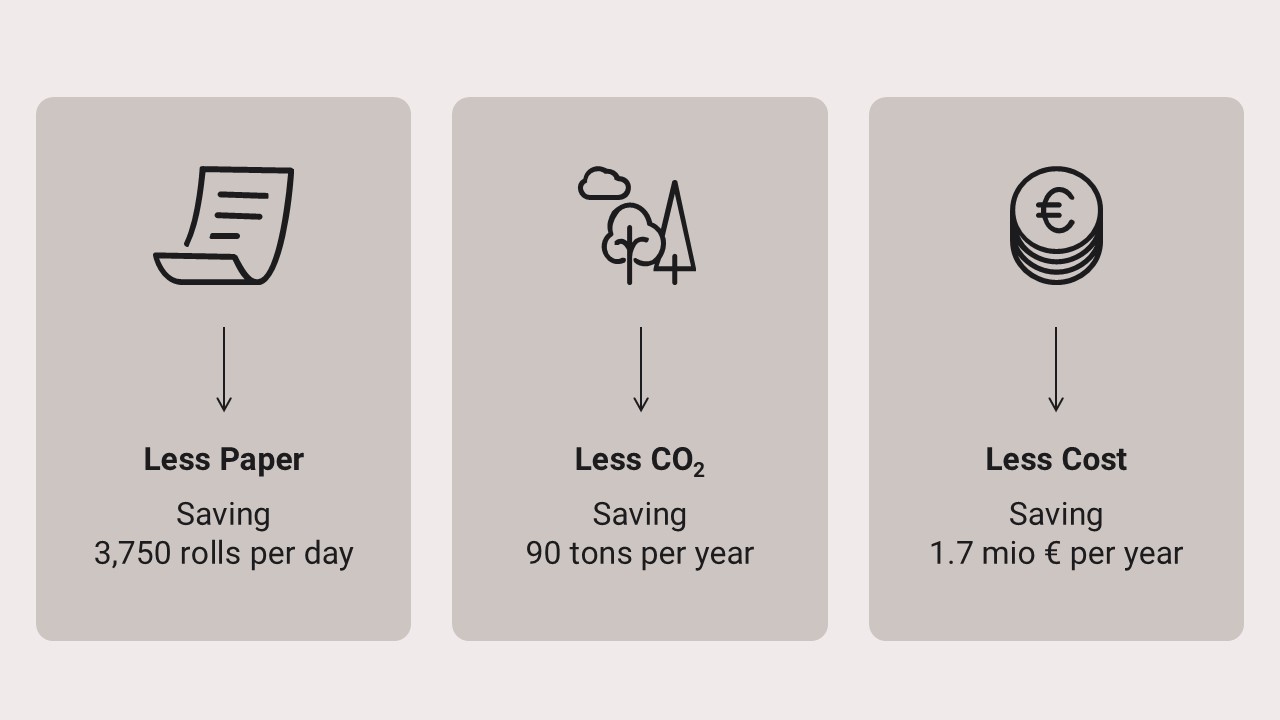A closer look shows that there is a lot of potential in this seemingly ordinary topic, both in terms of costs and sustainable business practice. It is therefore worth devoting more attention to the topic and not just accepting it as a necessary evil.
Here is a simple model calculation: GK Software alone generates over one million electronic receipts every day in Germany for customers who use GK e-receipt. This corresponds to more than 3,750 receipt rolls saved per day (conservatively calculated with 30 cm long receipts and 80 meter long receipt rolls). Transferred to one year, this means a receipt roll length of 90,000 kilometers. That is about a quarter of the distance to the moon! Assuming a price of 1.50 euros per receipt roll, the cost reduction for the rolls alone is almost 1.7 million euros (excluding transport and handling costs for over 500 Euro-pallets required).
Even this small sample calculation impressively documents the savings potential that lies in this topic. To carry out this calculation with your data, we provide you with a receipt cost calculator on our website.

In addition to costs, saving on a physical receipt roll also has an important sustainability aspect. The down payment of the receipt rolls not required by the GK solution alone saves around 90 tons of CO2 that would have been generated by production and distribution (0.06 kg CO2 for production and 0.02 kg CO2 for transport per roll). This shows that cost reduction and sustainability go hand in hand when it comes to receipt rolls.
This issue is particularly important in Germany, Austria and Italy. In most other countries, there is no obligation to print a receipt. On the contrary, in the Scandinavian countries or in California, there are even active efforts to avoid printing receipts. In many European countries, the US, Japan and South Korea, retailers already use electronic documents if customers want them. This shows that digitalization and fiscal control can be combined very well.
Mandatory receipts in Germany: between control and criticism
Interestingly, the current coalition agreement has triggered a (new) debate about the "receipt obligation" in Germany. However, the term itself is already vague, which means that the debate is going in different directions. It is actually about the obligation to issue receipts (Section 146a (2) of the German Fiscal Code (AO)), which means that customers must be provided with a printed document of their purchase, regardless of whether they want one or not. Abolishing the receipt, whether electronic or printed, is unthinkable in all cases involving warranties and guarantees, for example. After all, how are customers supposed to prove the purchase of a washing machine or a refrigerator that breaks down during the warranty period, for example, without a legally binding receipt?
The obligation to issue receipts, which has existed in Germany since 2016 and has been mandatory since 2020, has always been criticized, but has also found many supporters. Critics have focused on proportionality, costs and sustainability. In addition to the cost aspect, many retailers question the usefulness of a receipt for small amounts, for example at the bakery.
On the other hand, the arguments of the proponents cannot be dismissed out of hand, as the state is said to lose up to 70 billion euros annually through tax avoidance (including wages/salaries paid illegally, lost income tax and social security contributions, etc.). This is to be counteracted by the fact that every receipt can be checked retrospectively by the tax authorities using a fiscal signature. The argument that cannot be dismissed is that transactions for which no receipt has been issued can very easily be exploited to avoid tax. As e-receipts also have to comply with fiscal requirements, this argument does not apply here.
Variety of solutions: From simple e-receipts to loyalty platforms
Over the last five years, many retailers have switched to electronic receipts as an alternative or additional offer. The legal situation is anything but simple, as there is a regulation that requires the customer's prior consent - but the various solutions used in retail are generally tolerated.
There are now several providers of electronic receipts (e-receipts) on the market that either specialize in this topic or integrate corresponding solutions into larger offers. Retailers who want to use such a system must decide how large the scope should be.
- Is it purely about e-receipt functionality?
- Is it about embedding the e-receipt solution in an existing retailer app?
- Should the e-receipt be part of a larger solution and should the legally compliant archiving and use of receipts be ensured over a longer period of time?
If it is simply a matter of providing a receipt in electronic form, the most important factors are a quick and easy connection to the POS system and costs that are as transparent as possible. Newer POS systems can usually be connected relatively easily. The receipt is then generated in the POS system, but instead of a printout, it can be retrieved by the customer via app or Q code. This process is usually so fast that the receipt is available "near-realtime” - i.e. it is already available during payment. Of course, it must also be ensured - at least according to the current legal situation - that customers can also be provided with a printout if required.
Completely different possibilities arise when retailers use a modern loyalty solution. This is because the receipt can then be kept for a longer period of time and made available to customers. Simultaneously, there are extensive opportunities for retailers to analyze customer-specific purchasing behavior. This can then be responded to in the form of precise recommendations. However, the long-term storage and evaluation of receipts requires significantly more capacity than a simple e-receipt solution. It should mentioned that retailers are obliged to keep receipts for 8+1 years anyway.
Solutions for electronic receipts are already available with different processing depths, retention periods and corresponding costs. It can be assumed that customers will increasingly demand digital receipts, which will simplify processes and reduce environmental costs.
GK solutions for the e-receipt
GK e-receipt: Cloud-based solution for paperless receipts that is open to all retailers and can be used in parallel with an existing customer loyalty app. GK e-receipt can be easily integrated into most POS solutions on the market. The e-receipts can be issued their own apps or via a retailer-independent app. GK e-receipt can be connected and deployed in a very short time.
GK Engage: The holistic loyalty platform that enables retailers to develop and run scalable loyalty programs with full control. Compatible and on any device. GK Engage enables retailers to understand their customers' actions to offer customized incentives that increase loyalty, brand value and share of wallet. E-receipt and long-term storage of receipt data are among the many options offered by GK Engage.
Want to know more about our solutions? We will be happy to advise you. Contact us now!
